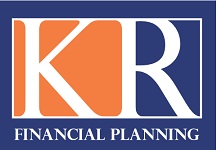Depreciation is a key element of your investment property strategy. While depreciation tax breaks are higher on newer properties, they’re available for all types of investment properties. ‘The Successful Investor’s’ Michael Sloan explains how.
How Do They Work?
In our first story, we detailed the depreciation tax breaks you can claim on a new investment property. But many investors miss out on tax breaks in the mistaken belief they don’t apply to older properties. They do – and here’s why.

Capital Works Deductions
If a property was built after 15 September 1987 you’d be able to claim 2.5% depreciation each year until it was 40 years old.
So, if a property originally cost $100,000 to build in 1990, you could claim $2,500 each year until 2030.
Depreciating Assets
You can claim tax breaks on depreciating assets no matter how old the property is.
Things like carpets, curtains, bathroom fittings, dishwasher and washing machines all qualify for depreciation as they age. The Australian Tax Office (ATO) lists all the items you can claim on and how long they should last – referred to by the ATO as the item’s ‘effective life’. For instance, a carpet should last 10 years while a kitchen stove should last 12.
As announced in the 2017 Budget, your entitlement to depreciation will depend on when you acquired the property.
For properties that were acquired before 9 May 2017 (including contracts entered into before that date), and plant and equipment that form part of the property, investors can claim depreciation based on a surveyor’s assessment of the asset’s remaining life and value.
For properties acquired after 9 May 2017, depreciation only applies for:
-
costs on plant and equipment you paid for (e.g. new carpets or fridge); or
-
plant and equipment included as part of the new property.
Subsequent owners of the property won’t be able to claim deductions for plant and equipment bought by the property’s previous owner.
Prime Cost vs Diminishing Value
You have two options if you claim this tax break:
-
prime cost method
-
diminishing value method.
While both result in the same claimable amount, when you get it will differ.
Prime cost method
This gives you the same annual tax deduction for the item’s effective life.
Diminishing value method
This is where you get higher claims earlier in the item’s effective life, and lower ones later. Most investors choose this as they receive higher tax breaks sooner. Your accountant will advise which method is best for you.
For more information, the ATO has a guide to what you claim on rental property expenses.
Please contact us on (07) 3844 4322 if you seek further discussion on this topic.
Reproduced with permission of National Australia Bank (‘NAB’). This article was original published at https://business.nab.com.au/
National Australia Bank Limited. ABN 12 004 044 937 AFSL and Australian Credit Licence 230686. The information contained in this article is intended to be of a general nature only. Any advice contained in this article has been prepared without taking into account your objectives, financial situation or needs. Before acting on any advice on this website, NAB recommends that you consider whether it is appropriate for your circumstances.
© 2020 National Australia Bank Limited (“NAB”). All rights reserved.
Important: Any information provided by the author detailed above is separate and external to our business and our Licensee. Neither our business nor our Licensee takes any responsibility for any action or any service provided by the author. Any links have been provided with permission for information purposes only and will take you to external websites, which are not connected to our company in any way. Note: Our company does not endorse and is not responsible for the accuracy of the contents/information contained within the linked site(s) accessible from this page.


